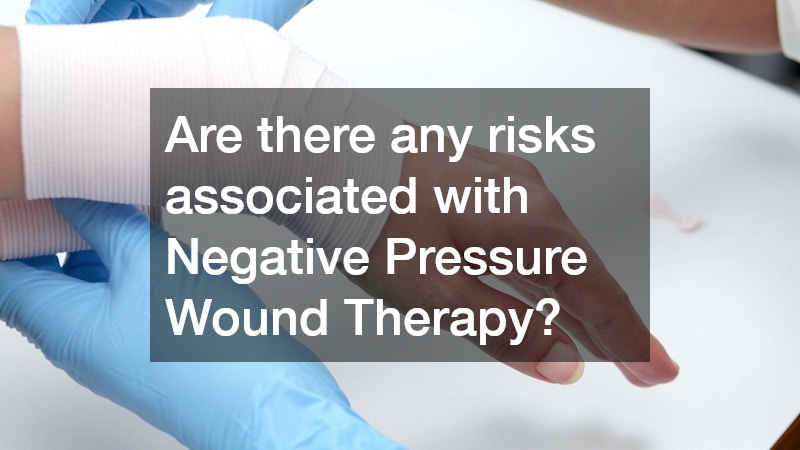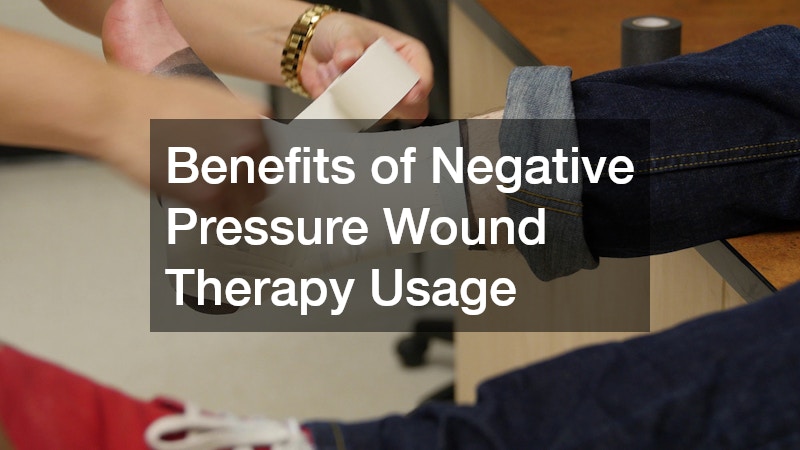Negative Pressure Wound Therapy (NPWT) is a pivotal innovation in modern medical practices, revolutionizing how healthcare professionals approach wound management. It significantly enhances wound healing by promoting granulation tissue formation, reducing edema, and improving blood flow to the affected area.
This therapeutic technique is crucial for treating complex wounds, patients with comorbidities, and challenging healing environments. By maintaining a controlled negative pressure environment at the wound site, NPWT supports accelerated healing and better patient outcomes.
This introduction provides a foundational understanding of NPWT’s significance in contemporary medicine and how it supports wound healing technologies moving forward.
What is Negative Pressure Wound Therapy?
Definition and Mechanism
Negative Pressure Wound Therapy, often known by its acronym NPWT, is a therapeutic technique that applies controlled suction to a wound site. This technique works by improving blood flow, reducing edema, and stimulating tissue regeneration, thereby facilitating faster and more efficient healing processes.
By creating a closed environment over the wound, NPWT cleanses with negative pressure, drawing away infectious materials and fluids. This vacuum pressure helps to decrease bacterial load and encourages the edges of the wound to come together naturally.
Overall, the mechanism of NPWT enhances wound healing by providing consistent sub-atmospheric pressure, thereby improving the wound environment and supporting complex wound closure.
Historical Background
The evolution of NPWT traces back to the late 20th century, when researchers explored the benefits of using vacuum-assisted closures. Initially, the focus was on treating chronic wounds and non-healing ulcers, which were problematic in traditional wound care scenarios.
Over the decades, medical technology advancements and increased clinical research facilitated the integration of NPWT into standard wound care protocols. Today, NPWT is recognized globally for wound management and its potential to transform treatment pathways across various medical disciplines.
This therapy’s historical adaptation showcases how innovative medical practices can result from consistent research and real-world application, setting new standards in wound care efficacy.
How does Negative Pressure Wound Therapy work?
Components of NPWT
NPWT comprises three primary components working in harmony to deliver effective wound management: a suction pump, specialized wound dressing, and a collection canister. The suction pump applies negative pressure to the wound bed, enhancing fluid removal and aiding in tissue approximation.
The wound dressing creates an airtight seal around the wound, ensuring that the negative pressure is successfully maintained, while the canister collects fluids and exudates, keeping the wound site clean. This integration of components facilitates an optimized healing environment, vital for accelerating recovery.
Each element plays a critical role in enhancing the therapy’s functionality, underscoring how collaboration between components can drive optimal clinical outcomes in treating difficult wounds.
Process of Application
Applying NPWT involves meticulous preparation and skilled execution to ensure effective wound care management. Initially, the wound has to be thoroughly cleaned and debrided to create a suitable surface for the application of the therapy.
Healthcare professionals then carefully place the dressing over the wound, establishing an airtight seal with the skin’s surface before connecting it to the vacuum pump. Throughout the therapy duration, continuous monitoring ensures the negative pressure is maintained and adjusted as needed to align with healing progression.
This detailed application process demonstrates the complex yet essential steps taken to harness NPWT’s full therapeutic potential, making it indispensable to wound care management.
What are the benefits of using Negative Pressure Wound Therapy?
Faster Healing Times
One of the primary benefits of NPWT is the reduction in healing times for patients. By promoting increased perfusion and facilitating tissue regeneration, patients experience quicker recovery than traditional wound management techniques.
This expedited healing process is particularly advantageous for chronic wounds, where protracted healing poses significant health risks and emotional burdens. NPWT optimizes wound conditions to create an ideal environment for faster and effective healing.
Ultimately, faster healing translates into fewer complications, reduced dependency on long-term care, and earlier return to normal activities for patients, contributing to a higher quality of life and overall patient satisfaction.
Reduced Risk of Infection
NPWT significantly reduces the risk of wound infections, a critical advantage in the healing process. The consistent negative pressure removes excess fluids and infectious materials, thus minimizing the potential for bacterial proliferation at the wound site.
This control measure acts as a preventive barrier, keeping harmful pathogens from gaining a foothold and leading to severe complications. By maintaining an optimal wound environment, NPWT lowers infection rates and supports smoother recovery pathways.
With fewer infections, patients benefit from enhanced safety in wound management, diminishing the chances of prolonged treatments and associated healthcare costs, ultimately improving the overall efficacy of wound care strategies.
Are there any risks associated with Negative Pressure Wound Therapy?
Potential Complications
While NPWT is generally safe, certain complications may arise, needing precaution and vigilance. Patients might experience skin irritation due to constant pressure or adhesive reactions from the dressing.
Technical malfunctions, such as blocked tubing or power failures, could interrupt continuous therapy, affecting treatment efficacy. Nonetheless, these complications are often manageable with prompt response and appropriate adjustments.
By understanding potential risks, healthcare providers can implement measures to mitigate them, ensuring patient safety and optimizing therapeutic outcomes during NPWT applications.
Precautions and Risk Management
Effective risk management strategies are crucial to safely administer NPWT while maximizing therapeutic benefit. Ensuring proper dressing application, regular site inspection, and maintaining equipment functionality are paramount in managing potential complications.
Healthcare providers need to be vigilant about patient-specific factors such as allergies, comorbidities, and the wound’s infection status to tailor therapy settings appropriately. Continuous education and adherence to standardized protocols support the safe deployment of NPWT across diverse patient populations.
With diligent application of these precautions, the effectiveness of NPWT can be harnessed successfully, optimizing patient outcomes and sustaining this advanced healing modality’s broad acceptance and utilization.


